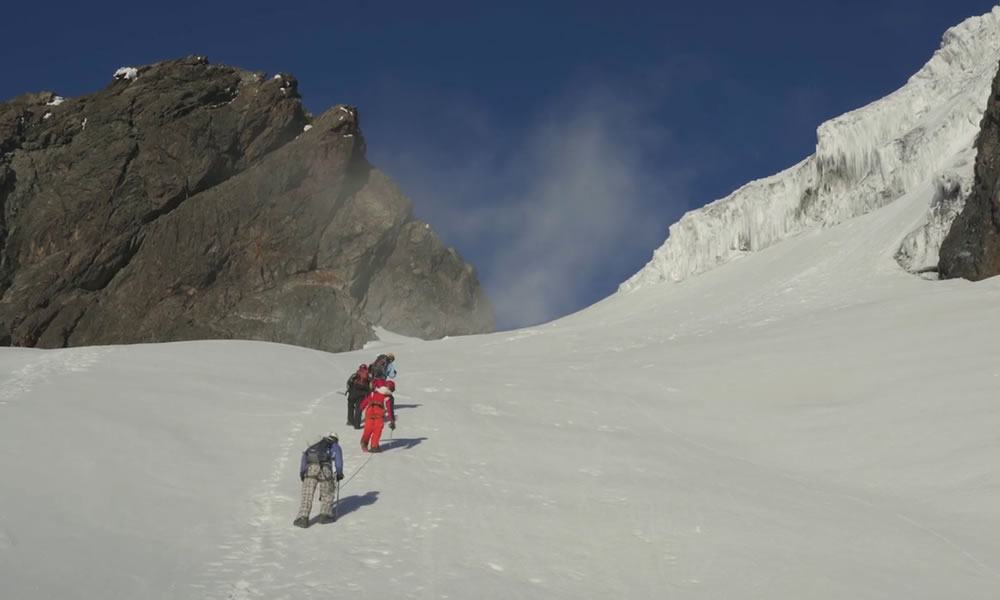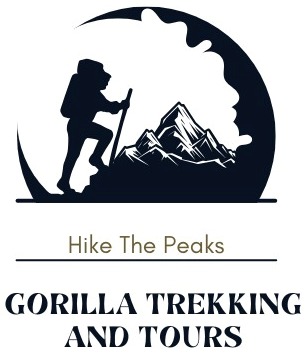The Rwenzori Mountains National Park was gazetted in 1991 and subsequently recognised as a World Heritage site in 1994 and a Ramsar site in 2008. The Rwenzori, unlike the other major mountains in East Africa, are not volcanic; rather, they are a slab of rock that up-failed through the bottom of the Western Rift Valley. Approximately 150 AD, the Alexandrine geographer Ptolemy named the Rwenzoris the “Mountains of the Moon”. Henry Stanley, the explorer, included the Rwenzori on May 24, 1888. The native term “Ruwenzori,” which means “Rain-Maker” or “Cloud-King,” was given to it by him. In 2010, Ms. Beryl Park, then eighty-eight, became the oldest person to ever summit Margherita Peak.

Located in western Uganda, close to the Congo border, are the Rwenzoris, also known as the mythical Mountains of the Moon. The lower slopes are covered with rich, damp montane forest, moorland, and bamboo, with the equatorial snow peaks including the third highest point in Africa. Enormous lobelias and “everlasting flowers” are draped across the slope by enormous tree heathers and vibrant mosses, creating a sight straight out of a fairy tale. Parts of the 120km long and 65km wide Rwenzori mountain range are protected as part of the Rwenzori Mountains National Park. The national park is home to 217 bird species, including 19 endemic species of the Albertine Rift, 70 animal species, and some of the rarest vegetation in the world.
A top-notch location for trekking and mountaineering is the Rwenzoris. The highest mountain, Margherita, may be reached by experienced climbers in nine to twelve days, however shorter, less difficult hikes can be taken to reach the other peaks. For those who would want something a little less demanding, nearby Bakonzo villages provide accommodations with home-cooked regional food, nature walks, and homestead visits.
Things to do in Rwenzori Mountains National Park
Climbing the Rwenzori Mountains
The Rwenzori Mountains have been ascended by some of the top mountain trekkers in the world. The park’s mountain hiking programme is set according to international standards. Hikers with limited experience may find it quite difficult to summit Margherita, the highest peak. Hikes that are shorter and less demanding might be planned around the mountain instead of ascending to the top of the snow-capped summits. The summit is reached by hikers via two distinct hiking trails. The first one is the seven-day Central Circuit Trail, which begins at Mihunga. The only organisation that arranges trekking along this route is Rwenzori Mountaineering Services.
The Kilembe trail, which begins in Kilembe, close to Kasese town, is the second trail. The Rwenzori Trekking Services is in charge of this recently launched route. Reaching one of the summits requires five days. It takes at least nine days to tour all three of the highest summits. Reaching Margherita’s highest peak provides chances to take in views of the snow-capped summits and alpine flora. Hikers who descend the mountain are rewarded with longer vistas of the DR Congo’s Virunga hills, Queen Elizabeth National Park, and expansive farmlands. High up on the mountains, climbers will also come across stunning lakes and rivers.
Using a tour operator to plan a hiking excursion in the park is the most practical option. Together with assisting with lodging and transportation arrangements, a tour operator can engage with Rwenzori Mountaineering Services to make arrangements for porters, guides, and cooks. Hiking to the top of the mountains involves expenses for two porters, guides, a cook, a rescue mission, lodging, and heating.
Hiking in the Forest and Foothills: Novice mountain climbers might choose to hike through the forest and on the mountain slopes, or they can hand fish in some of the streams on the mountain hills. Keep an eye out for the three-horned Rwenzori chameleon while you’re in the forest. Only the DR Congo, Rwanda, and Uganda are home to this uncommon reptile. While the female chameleon has none, the male has three horns.
Bird Watching
The Rwenzori area is recognised as a priority Birding Area by UNESCO. Several species can be found in the park and its mountains, such as the African Long-eared Owl, Barbets, Blue-headed Sunbird, Cinnamon-chested Bee-eater, Collared Apalises, Crimson wings, Dusky and Shelley’s Crimsonwings, Dwarf Honeyguide, Evergreen Forest and Bamboo Warblers, Flycatchers, and Archers’ Robin-chat. Scarlet-tufted Malachite Sunbirds, Golden-winged Sunbirds, and Rwenzori Mountains BirdwatchingGreenbuls, Grauer’s Cuckoo-shrike, Golden-winged Sunbird, Kivu Ground Thrush, Grey-chested Illadopsis, Grey-winged Robin, Handsome Francolin, and IIladopsis.
Cultural Experiences
Opportunities for cultural interactions with one of the native tribes residing at the base of the mountains can be found in the Rwenzori Mountains National Park. Visitors interested in learning about the history and way of life of the Bakonzo tribe can visit the village of Ruboni. The Bakonzo people share historical facts and organise cultural dance events.
The Bulemba-Ihandiro Cultural Trail offers another fascinating cultural experience. Additional exposure to the fascinating Bakonzo culture is provided via this trail. There are chances to see neighbourhood blacksmiths and traditional healers. Visitors have hands-on experience making fire and weaving baskets. The Bakonzo Traditional Museum is also accessible to tourists via the Bulemba-Ihandiro Cultural Trail.
Nature Walks
Companies such as Rwenzori Mountain Services (RMS) and Backpackers in Kilembe can provide nature walks close to the park’s limits. The RMS typically arranges walks along the same central circuit zone that mountain climbers use. The region surrounding the mountain hiking trailhead is wooded, offers breathtaking views, and leads up to Lake Mahooma and the Buraro Chimpanzee Forest. You can set up the nature walks with any of these companies with the assistance of your tour company.
